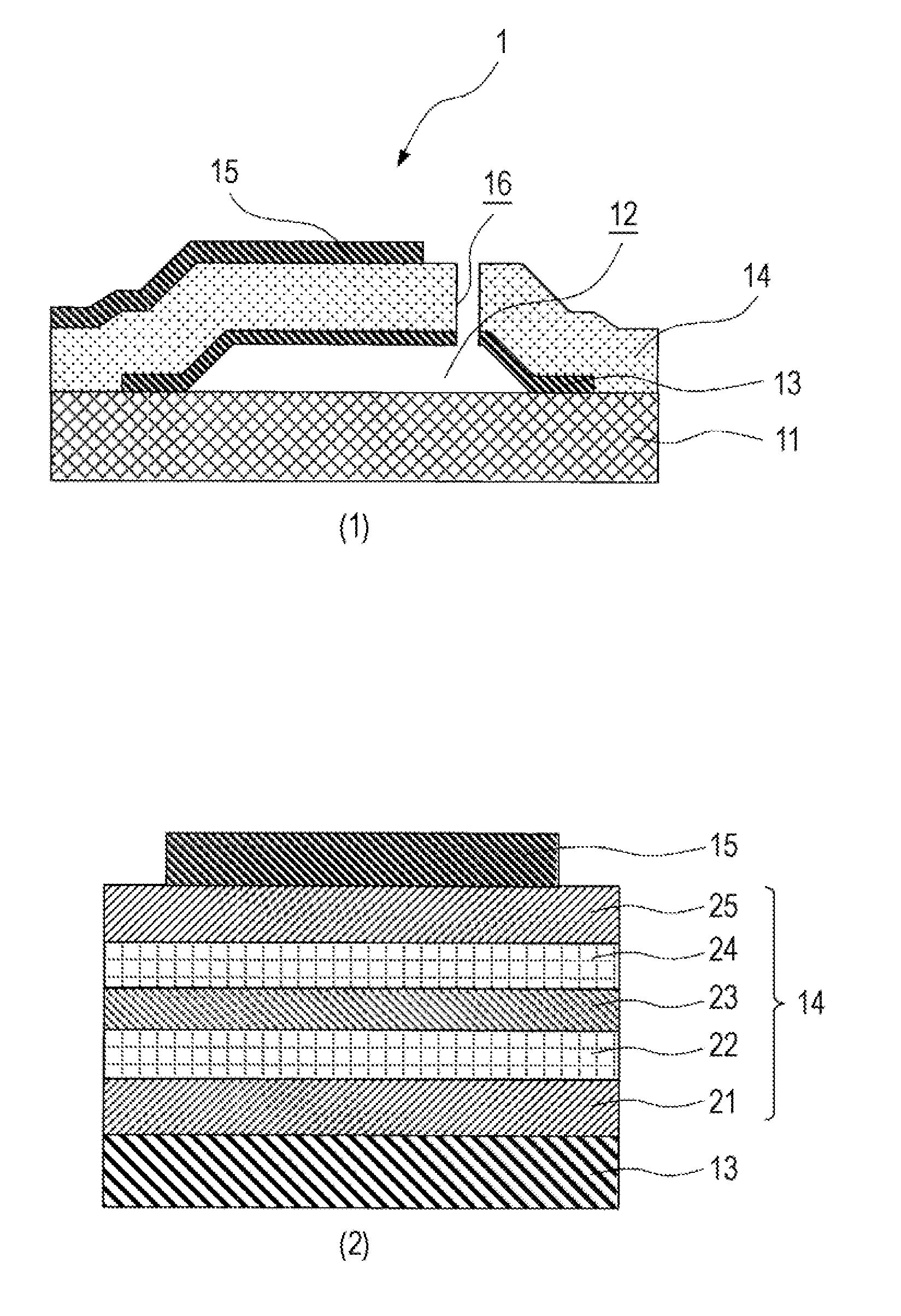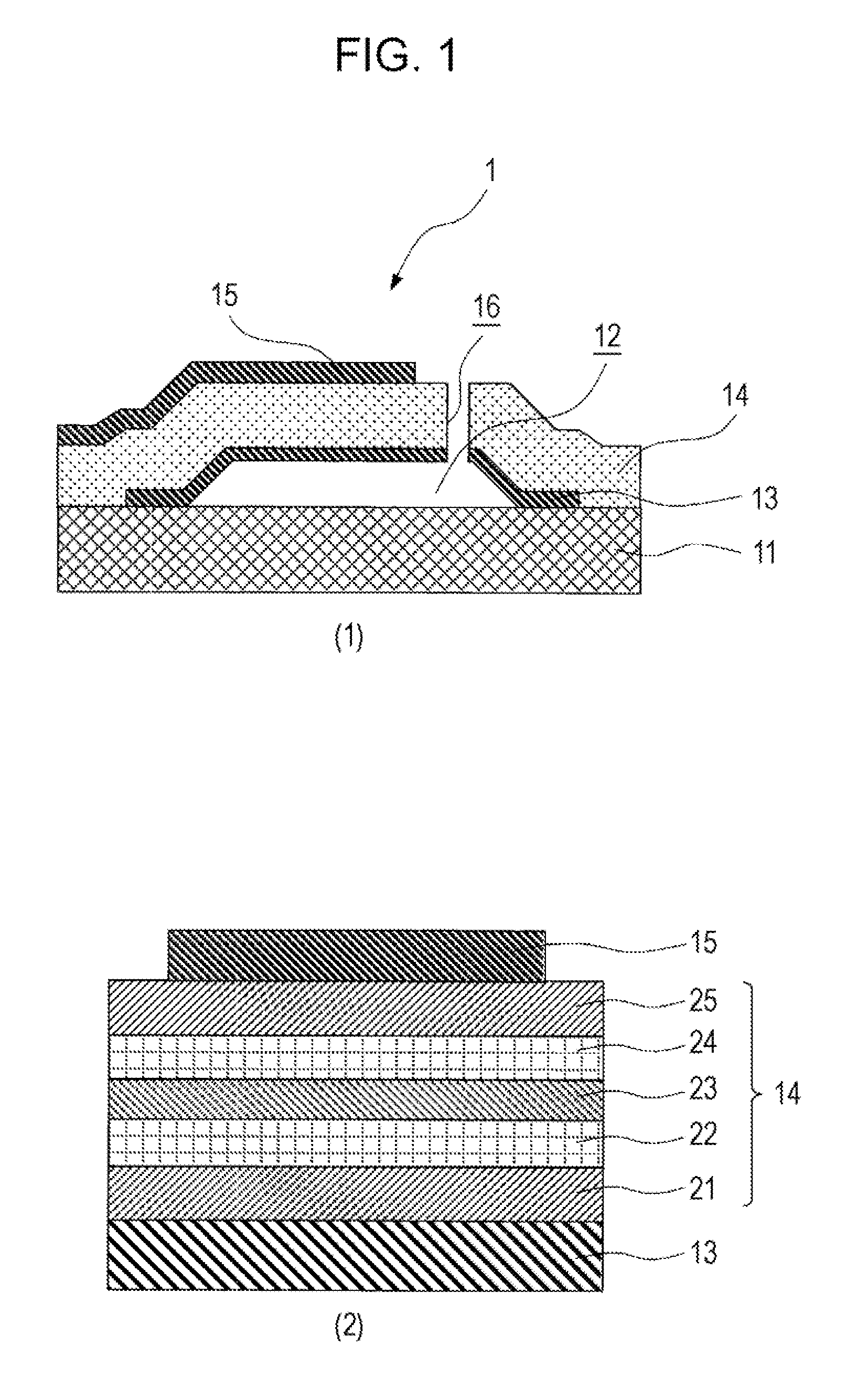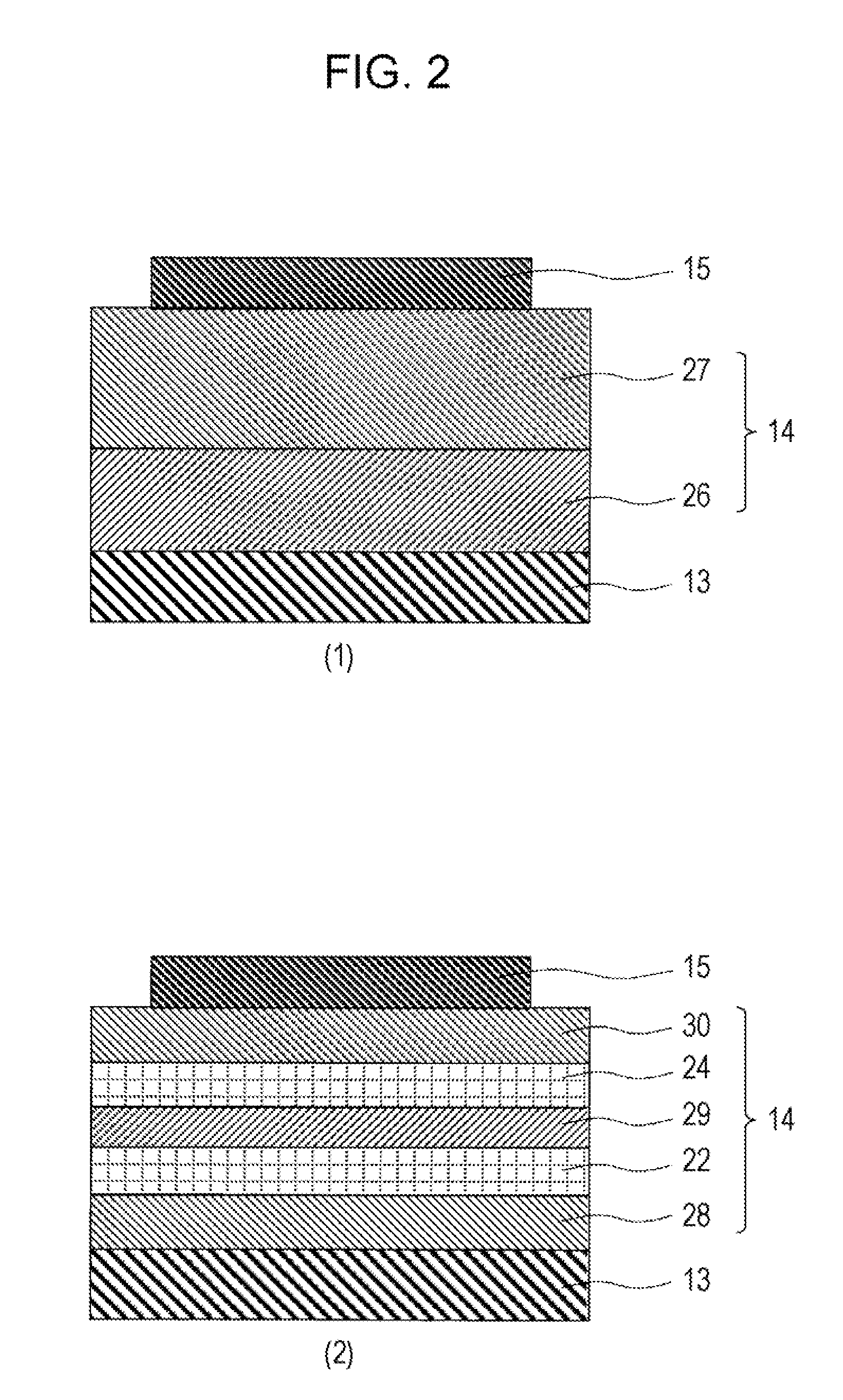Acoustic resonator and its fabricating method
a technology of acoustic resonators and fabrication methods, applied in the direction of device details, device material selection, device details, etc., can solve the problem of inability to realize high electromechanical coupling coefficient, and achieve the effect of high q value, and increasing electromechanical coupling coefficien
- Summary
- Abstract
- Description
- Claims
- Application Information
AI Technical Summary
Benefits of technology
Problems solved by technology
Method used
Image
Examples
first embodiment
[0032]an embodiment according to an acoustic resonator of the present invention will be described using FIG. 1. Part (1) of FIG. 1 is a sectional view schematically illustrating the structure of the acoustic resonator, and part (2) of FIG. 1 illustrates an enlarged sectional view of a piezoelectric layer.
[0033]As shown in FIG. 1, a first electrode (lower electrode) 13 is formed on the top face of a supporting substrate 11 so as to cover an air layer 12. That is, the air layer 12 is enclosed by the first electrode 13. The first electrode 13 is made of, for example, molybdenum (Mo) and is formed to have a thickness of, for example, 230 nm. The first electrode 13 may be formed using, besides molybdenum, a metal material such as tungsten, tantalum, titanium, platinum, ruthenium, gold, aluminum, copper, or the like. The first electrode 13 may alternatively be formed of a plurality of layers made of the electrode material.
[0034]A piezoelectric layer 14 is formed on the first electrode 13....
second embodiment
[0044]As shown in part (1) of FIG. 2, an acoustic resonator of the second embodiment has a structure similar to the foregoing acoustic resonator 1 except for the structure of the piezoelectric layer 14. Thus, the structure of the piezoelectric layer 14 will herein be described. The piezoelectric layer 14 is formed by staking, on the first electrode 13 formed on the supporting substrate 11 so as to cover the air layer 12, which has been described using FIG. 1, a compression stress layer 26 having compression stress and a tensile stress layer 27 having tensile stress, which is formed on the compression stress layer 26. Furthermore, the upper electrode 15 is formed on the tensile stress layer 27.
[0045]The thickness of the layers is, for example, as follows. The compression stress layer 26 has a thickness of 500 nm. The tensile stress layer 27 has a thickness of 500 nm. Thus, the thickness of the entire piezoelectric layer 14 is 1 μm.
[0046]In addition, the piezoelectric layer 14 is in a...
third embodiment
[0048]As shown in part (2) of FIG. 2, an acoustic resonator of the third embodiment has a structure similar to the foregoing acoustic resonator 1 except for the structure of the piezoelectric layer 14. Thus, the structure of the piezoelectric layer 14 will herein be described. The piezoelectric layer 14 is formed by sequentially staking, on the first electrode 13 formed on the supporting substrate 11 so as to cover the air layer 12, which has been described using FIG. 1, a tensile stress layer 28, the buffer layer 22, a compression stress layer 29, the buffer layer 24, and a tensile stress layer 30. The buffer layer 22 is provided between the tensile stress layer 28 and the compression stress layer 29 and is formed to alleviate tensile stress in the tensile stress layer 28 and compression stress in the compression stress layer 29. The buffer layer 22 is formed using, for example, an aluminum nitride layer having 0 stress or, for example, tensile stress or compression stress of 100 M...
PUM
 Login to View More
Login to View More Abstract
Description
Claims
Application Information
 Login to View More
Login to View More - R&D
- Intellectual Property
- Life Sciences
- Materials
- Tech Scout
- Unparalleled Data Quality
- Higher Quality Content
- 60% Fewer Hallucinations
Browse by: Latest US Patents, China's latest patents, Technical Efficacy Thesaurus, Application Domain, Technology Topic, Popular Technical Reports.
© 2025 PatSnap. All rights reserved.Legal|Privacy policy|Modern Slavery Act Transparency Statement|Sitemap|About US| Contact US: help@patsnap.com



